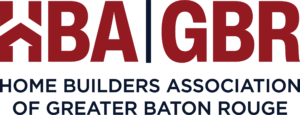
When one small change happens in your workplace, that is out of your control, it can shift the course of your professional life. How do you adapt? Evaluate your personal plan for growth and determine what needs to change. If you don’t have a plan, follow these three steps to help you continue professional and personal growth, whether you are a manager or CEO.
- Decide: Take Inventory.
You’ve decided that you want a change. The first step to growth is to take inventory. What are your strengths and weaknesses? What skills, expertise or passion do you have and what do you need to develop further? What do you not want to be doing anymore? Taking stock in what you want is not something that can be rushed. Change and growth will not magically happen. Often, this step takes the longest to work through because you need cognitive space to think about the ideas you have stored away for years and access what you bring to the table. Allow yourself space and time to prepare for the next step. - Design: Make a Plan.
Look at all the work you did in the previous step and use it to design your growth plan. What do you need to be ready to achieve your goals? What support or guidance will help you along the way? What factors from your personal life do you need to consider? For some, this step can include identifying credentials you’d like to earn, such as the Certified New Home Sales Professional or Master in Residential Marketing, to help catapult your career. For others, the plan may involve a long lead time – a year or more – to prepare financially. When designing for growth around your big idea, consider how your dream will affect those who are closest to you and if you have their support. It is equally important that during design, you also identify the limiting factors in a realistic manner. Remember, while there will always be something in your life that is limiting, it doesn’t mean your dream isn’t possible. - Deliver: Knock Their Socks Off!
When you’ve decided to do something that is going to affect your future, your career, and your family, you have to deliver. Follow through on the promises you make to others and yourself. Decide that now’s the time to start growing intentionally. Before too long, you’ll be asking, “What’s next?”
This post is adapted from a recent article in the NAHB Professional Women in Building Council’s Building Women magazine, by Kerry Mulcrone, an author and president of new home sales training and consulting company Kerry & Co., and Tess Wittler, freelance copywriter and content marketer for the building industry. Learn more about Building Women at nahb.org.





















